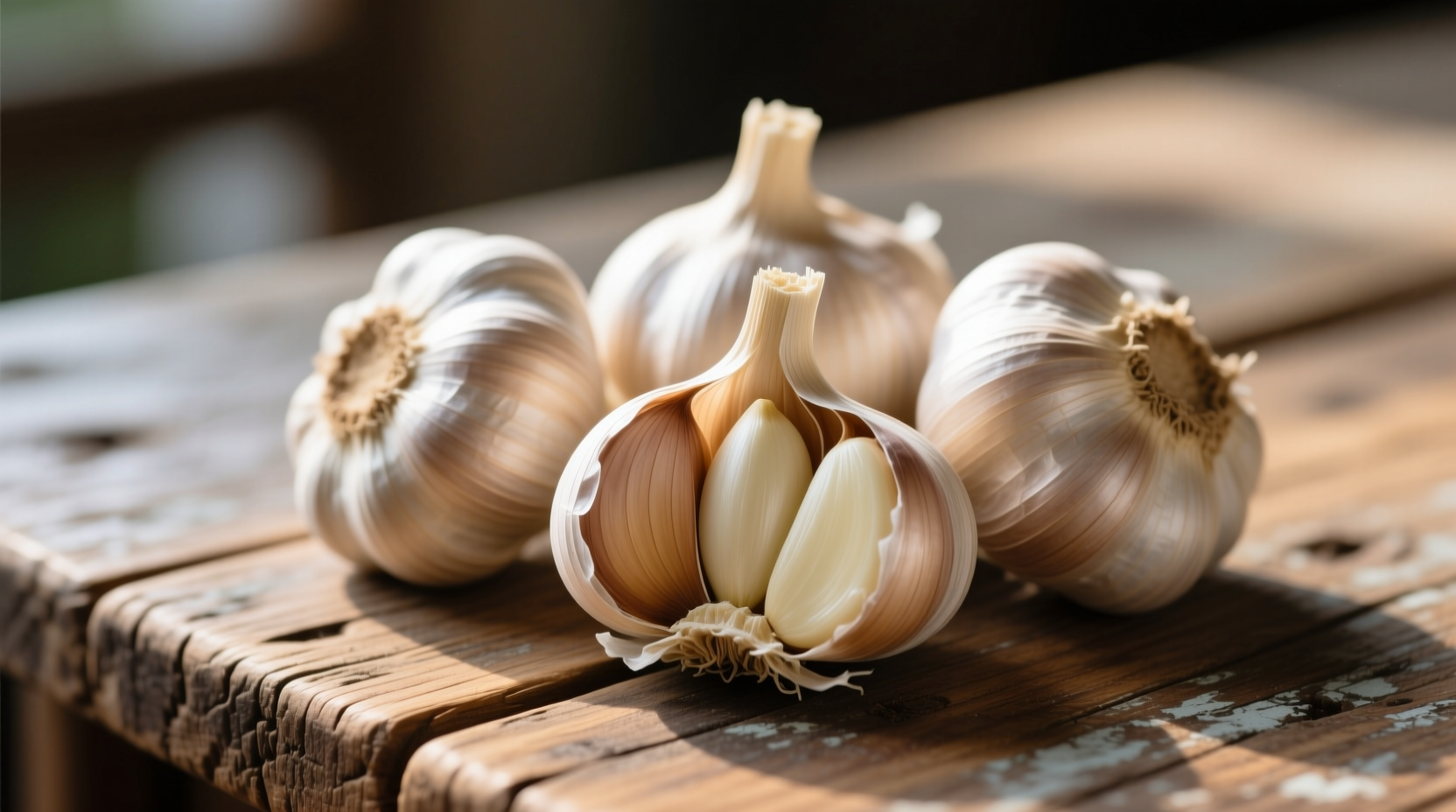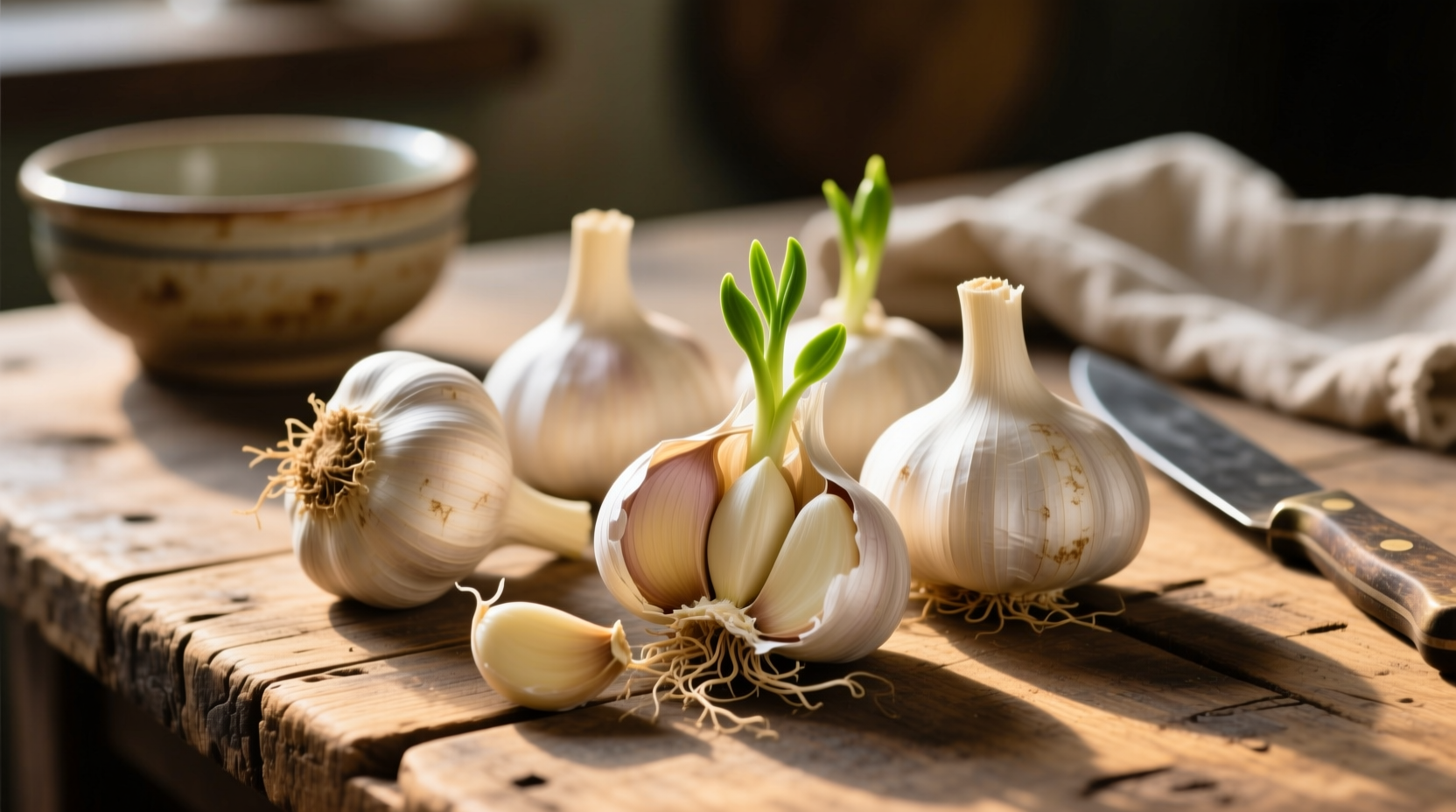Ever wonder why professional chefs always start with whole garlic heads rather than pre-minced jars? The secret lies in understanding how to properly select, store, and utilize these aromatic bulbs. When handled correctly, garlic heads deliver complex flavors that transform ordinary dishes into extraordinary culinary experiences.
What Exactly Are Garlic Heads?
Garlic heads (also called bulbs) represent the complete garlic plant structure you find at markets. Each head contains 10-20 individual segments known as cloves, all wrapped in multiple layers of protective papery skin. This natural packaging serves a crucial purpose—it preserves the garlic's flavor compounds and extends freshness significantly longer than separated cloves.
Unlike individual cloves which begin deteriorating immediately after separation, whole garlic heads maintain their quality for weeks when stored properly. The intact bulb structure prevents premature sprouting and moisture loss that occurs once cloves are exposed.

Garlic Varieties Comparison: Making the Right Selection
| Variety | Flavor Profile | Storage Duration | Best Culinary Uses |
|---|---|---|---|
| Softneck (Artichoke) | Mild, sweet when raw; rich when cooked | 6-9 months | Everyday cooking, garlic braids, roasting |
| Hardneck (Rocambole) | Complex, nutty, more intense heat | 3-5 months | Gourmet dishes, pesto, aioli, grilling |
| Purple Stripe | Earthy, robust, slightly floral | 4-6 months | Preserving, pickling, Mediterranean cuisine |
According to research from the University of California Agriculture and Natural Resources, hardneck varieties contain higher allicin levels—the compound responsible for garlic's health benefits—but have shorter shelf lives than softneck types. This scientific insight helps explain why certain garlic heads perform better in specific culinary applications.
Selecting Premium Garlic Heads: What Chefs Look For
Professional chefs evaluate garlic heads using three critical criteria that home cooks often overlook:
- Firmness test: Squeeze gently—quality heads feel solid with no soft spots or give. Avoid any with visible sprouting from the top.
- Skin integrity: Look for tight, dry, papery skin without mold, dark spots, or excessive looseness. The skin should feel crisp, not leathery.
- Weight assessment: Heavier heads for their size indicate higher moisture content and freshness. Lightweight bulbs suggest drying out.
When selecting garlic heads for roasting, choose larger specimens with evenly sized cloves for consistent cooking. For raw applications like aioli, smaller heads often deliver more concentrated flavor.
Optimal Storage Techniques for Maximum Freshness
Proper storage transforms how long your garlic heads remain usable. Follow these evidence-based methods:
- Room temperature storage: Keep in a cool, dark, well-ventilated area (60-65°F/15-18°C) away from direct sunlight. Mesh bags or terra cotta garlic keepers work best.
- Avoid refrigeration: Cold temperatures trigger sprouting and texture changes. The USDA Food Safety and Inspection Service confirms refrigeration accelerates quality deterioration in whole garlic heads.
- Never store near potatoes: Both release moisture and gases that accelerate each other's spoilage.
When stored correctly, softneck garlic heads maintain quality for 6-9 months, while hardneck varieties last 3-5 months. Check monthly for any developing soft spots and remove affected heads immediately to prevent spread.
Mastering Whole Garlic Head Preparation
Professional chefs employ specific techniques to maximize flavor extraction from garlic heads:
Roasting Whole Heads
Cut ¼ inch off the top to expose cloves, drizzle with olive oil, wrap in foil, and roast at 400°F (200°C) for 35-40 minutes. The cloves become sweet, spreadable, and mellow—perfect for bread, mashed potatoes, or salad dressings. This method preserves more beneficial compounds than high-heat sautéing, according to research published in the Journal of Agricultural and Food Chemistry.
Confit Technique
Submerge whole garlic heads in olive oil and cook gently at 250°F (120°C) for 45-60 minutes. The slow cooking infuses the oil with garlic flavor while tenderizing the cloves. Store both garlic and oil in the refrigerator for up to two weeks.
Common Garlic Head Mistakes to Avoid
Even experienced cooks make these critical errors with garlic heads:
- Peeling too early: Separating cloves more than 24 hours before use significantly reduces flavor compounds. Keep heads intact until ready to use.
- Using sprouted garlic: While not harmful, green sprouts indicate flavor deterioration. Remove sprouts before use for better taste.
- Overcooking: Garlic heads turn bitter when cooked beyond 45 minutes at high temperatures. Monitor closely during roasting.
Global Culinary Applications of Whole Garlic Heads
Different culinary traditions utilize whole garlic heads in distinctive ways:
- Middle Eastern cuisine: Bury whole heads in embers during lamb roasts for smoky, caramelized flavor
- Korean cooking: Ferment whole heads for black garlic production through controlled heat and humidity
- French technique: Insert whole peeled cloves into roasting meats for gradual flavor infusion
- Mexican preparation: Grill whole heads alongside vegetables for salsas and moles
Understanding these cultural techniques expands your culinary repertoire while honoring traditional garlic head applications that have evolved over centuries.
When Garlic Heads Reach Their Limits
Recognize these clear indicators that your garlic heads have passed their prime:
- Excessive softness or mushiness when gently squeezed
- Dark brown or black spots beneath the skin
- Strong, unpleasant odor (fresh garlic should have subtle aroma)
- Excessive sprouting with green shoots longer than 2 inches
Discard garlic heads showing these signs—consuming spoiled garlic can cause digestive discomfort. Never attempt to salvage partially spoiled heads by removing affected cloves, as spoilage compounds spread throughout the entire bulb.











 浙公网安备
33010002000092号
浙公网安备
33010002000092号 浙B2-20120091-4
浙B2-20120091-4